Camping is all about embracing the outdoors, but that doesn’t mean you have to sacrifice comfort or feel cramped in your tent. Whether you’re a solo backpacker, a couple, or a family hitting the trails, having enough space in your tent for sleeping, gear storage, and relaxation makes all the difference. A well-designed tent with clever space-saving features can transform your camping experience, giving you room to stretch out, stay organized, and enjoy your adventure to the fullest.
We’ve compiled the 20 best tent ideas to maximize space on your next adventure. From innovative tent designs to smart accessories and organization hacks, these ideas cater to every type of camper—backpackers, car campers, and festival-goers alike. Plus, we’ve included a detailed FAQ section to answer common questions about choosing and using space-efficient tents. Let’s explore how to make your tent feel like a spacious home away from home!
Why Space Matters in a Tent
A cramped tent can turn a fun camping trip into a logistical nightmare. Space isn’t just about comfort—it’s about functionality. You need room for sleeping bags, backpacks, cooking gear, and maybe even a spot to play cards during a rainstorm. Key features that maximize tent space include:
- High Peak Heights: Taller tents allow you to stand or sit upright, making the interior feel larger.
- Vertical Walls: Near-vertical walls (found in cabin-style tents) increase usable floor space.
- Vestibules and Awnings: Exterior storage areas keep gear out of the sleeping area.
- Gear Lofts and Pockets: Internal organization keeps small items off the floor.
- Modular Designs: Dividers or add-on rooms create flexible layouts.
With these principles in mind, we’ve curated a mix of tent designs, accessories, and hacks to help you make the most of your camping setup. Here are our top 20 ideas for 2025.
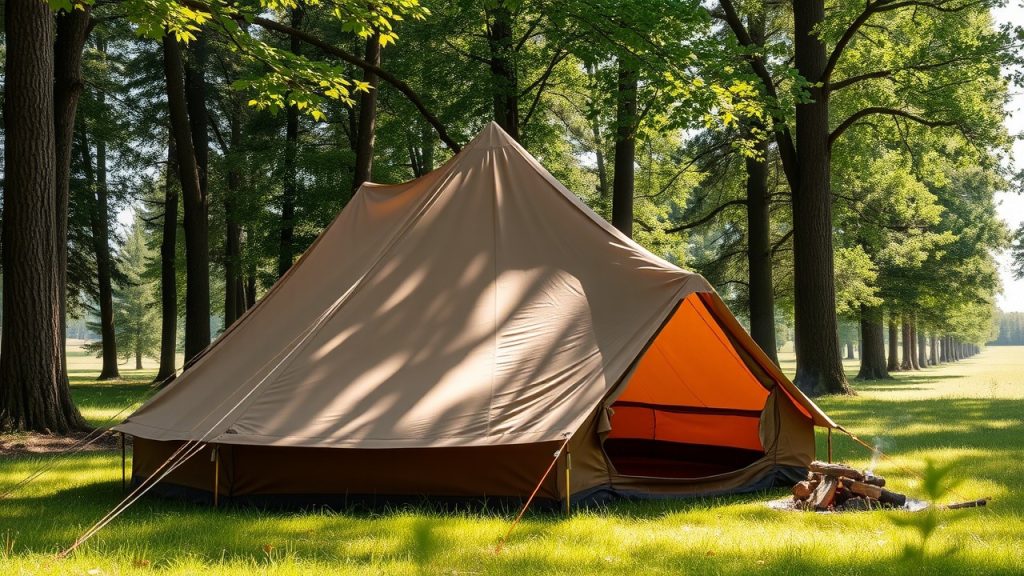
1. Cabin-Style Tents for Maximum Headroom
Cabin-style tents, like the REI Co-op Kingdom 6, feature near-vertical walls and high peak heights (up to 7 feet), making them ideal for car campers who want a spacious feel. These tents maximize floor space and allow you to stand, change clothes, or move around comfortably.
Why It Works: The vertical walls create more usable space than dome tents, and large windows enhance the airy feel. Look for models with room dividers for privacy.
Pro Tip: Pair with a footprint to protect the floor and add a rug for a cozy, home-like vibe.
2. Multi-Room Tents for Family Camping
For families or groups, multi-room tents like the Eureka Copper Canyon LX 12 offer separate sleeping areas, creating a spacious and organized setup. These tents often include dividers and multiple doors for easy access.
Why It Works: Dividers keep gear and sleeping areas separate, while spacious vestibules store wet or bulky items. The 12-person model has a 168-square-foot floor area.
Pro Tip: Assign each “room” a purpose (sleeping, storage, or lounging) to stay organized.
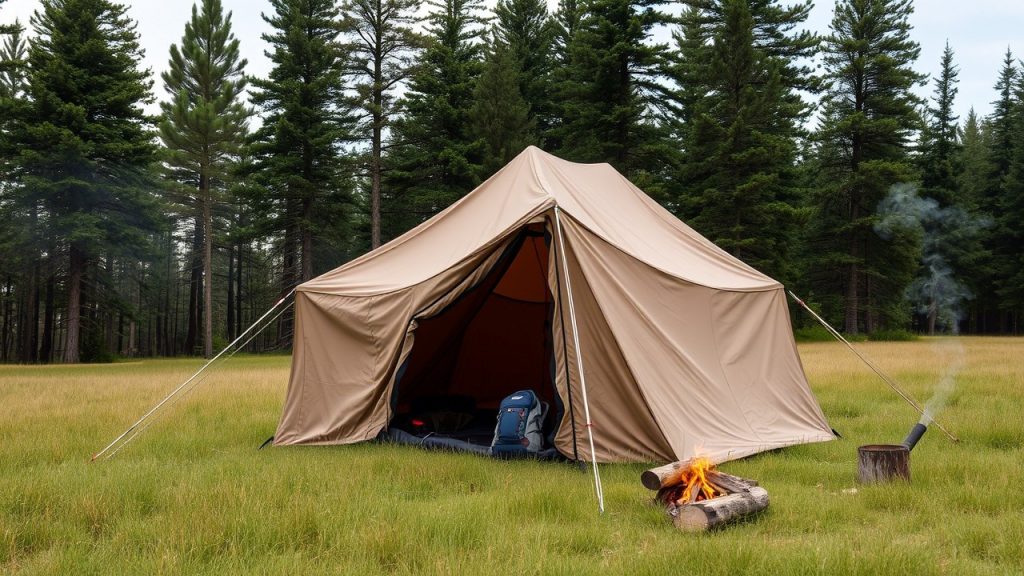
3. Vestibule Add-Ons for Gear Storage
Tents with large vestibules, like the The North Face Wawona 6, provide covered exterior storage for backpacks, shoes, and cooking gear. Some models offer detachable vestibules for flexibility.
Why It Works: Vestibules keep the sleeping area clutter-free, effectively doubling your usable space. The Wawona’s gear garage fits bikes or camping chairs.
Pro Tip: Use a tarp under the vestibule to keep gear dry in wet conditions.
4. Lightweight Backpacking Tents with Smart Design
For backpackers, lightweight tents like the MSR Hubba Hubba NX 2 maximize space without adding weight (3 lbs 12 oz). These tents use hubbed poles and steep walls to create a roomy interior despite a compact footprint.
Why It Works: The symmetrical design and dual vestibules ensure every inch is usable. Mesh walls make the tent feel larger.
Pro Tip: Pack gear vertically in the vestibules to save floor space.
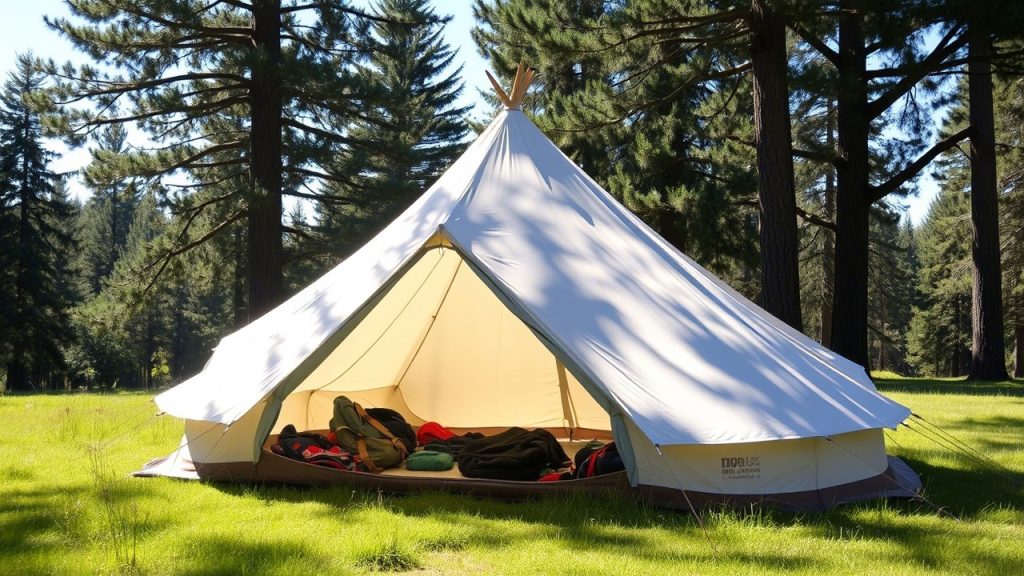
5. Gear Lofts for Vertical Storage
Many tents, like the Marmot Tungsten 4P, include gear lofts—mesh shelves that hang from the ceiling for storing headlamps, phones, or maps. If your tent doesn’t have one, add a universal gear loft accessory.
Why It Works: Vertical storage keeps small items off the floor, freeing up space for sleeping or lounging.
Pro Tip: Use carabiners to hang lightweight items from the loft for quick access.
6. Internal Pockets for Organization
Tents with multiple internal pockets, like the Nemo Aurora Highrise 6, help you organize essentials like keys, books, or snacks. Some models have pockets at different heights for convenience.
Why It Works: Pockets reduce clutter and make it easy to find items in the dark, keeping the floor clear.
Pro Tip: Assign pockets for specific items (e.g., one for electronics, one for toiletries).
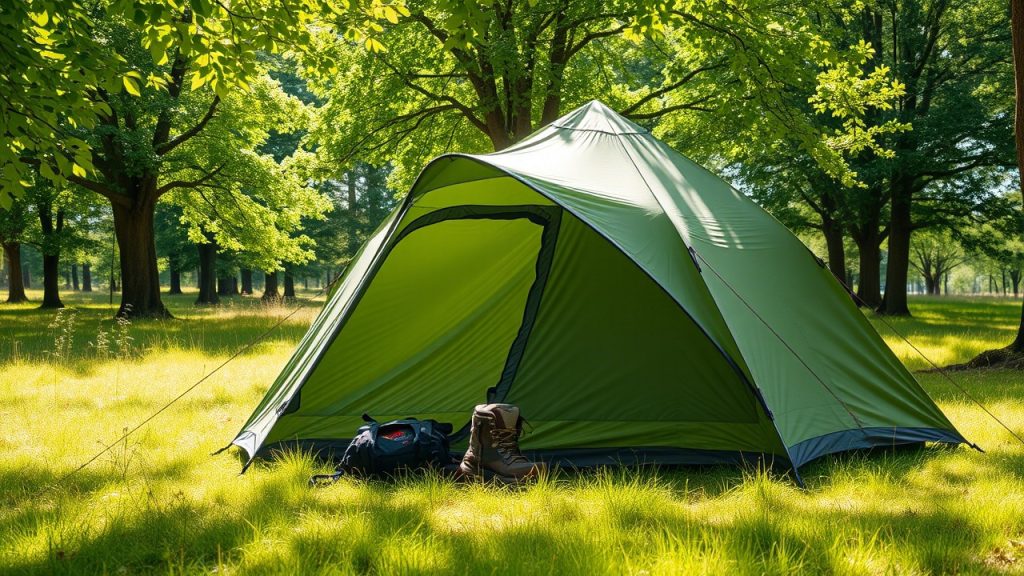
7. Tunnel Tents for Lengthy Layouts
Tunnel tents, like the Vango Odyssey 500, offer a long, narrow design that maximizes space for sleeping and storage. They’re great for small groups or couples with lots of gear.
Why It Works: The extended layout fits sleeping pads end-to-end, with room for gear at the foot or head. The 5-person model has a 50-square-foot floor.
Pro Tip: Stake guylines tightly to maintain the tunnel shape in windy conditions.
8. Pop-Up Tents for Instant Space
Pop-up tents, like the Quechua 2 Seconds XL, set up in seconds and offer decent space for casual campers. These are ideal for festivals or short trips.
Why It Works: The instant setup saves time, and models with vestibules provide extra storage. The XL model fits 3 people with gear.
Pro Tip: Practice folding the tent at home, as pop-ups can be tricky to pack.

9. Hammock Tents for Solo Adventurers
Hammock tents, like the ENO SkyLite, combine a hammock with a tent-like canopy, offering a compact yet spacious sleeping solution for solo campers in wooded areas.
Why It Works: By suspending your sleep setup, you free up ground space for gear storage below. The SkyLite includes internal pockets.
Pro Tip: Use a tarp above the hammock for rain protection and extra gear space.
10. Rooftop Tents for Car Campers
Rooftop tents, like the Thule Tepui Kukenam 3, mount on your vehicle’s roof rack, providing a spacious sleeping area without taking up ground space. They’re perfect for overlanding.
Why It Works: The elevated design leaves room for cooking or lounging below, and the 3-person model has a 96-inch-long interior.
Pro Tip: Add a roof rack storage box for gear to keep the tent clutter-free.
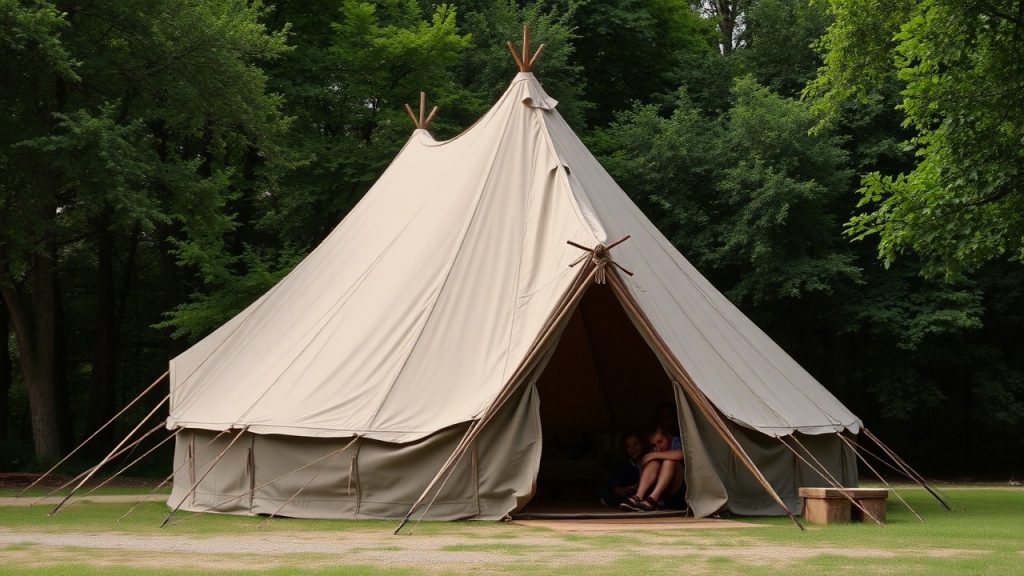
11. Modular Tent Systems for Flexibility
Modular tents, like the Crua Core Combo, allow you to connect multiple tents or add extensions for extra space. These are great for groups with changing needs.
Why It Works: You can customize the layout, adding sleeping pods or storage areas as needed. The Core fits 6 with add-ons.
Pro Tip: Use color-coded connectors to streamline setup.
12. Awnings for Outdoor Living Space
Tents with built-in awnings, like the Kodiak Canvas Flex-Bow 6, create a covered outdoor area for cooking or relaxing, effectively extending your usable space.
Why It Works: The awning keeps gear and activities outside, preserving the tent’s interior. The Flex-Bow’s awning spans 10 feet.
Pro Tip: Hang a tarp from the awning for extra rain protection.

13. Double-Wall Tents for Condensation Control
Double-wall tents, like the Big Agnes Copper Spur HV UL3, use a breathable inner layer and a waterproof rainfly to manage condensation, keeping the interior dry and spacious.
Why It Works: Less moisture buildup means more usable space and a cleaner floor. The UL3 has a 41-square-foot interior.
Pro Tip: Vent the rainfly to enhance airflow and reduce dampness.
14. Inflatable Tents for Quick Setup
Inflatable tents, like the Heimplanet The Cave, use air beams instead of poles, offering a spacious interior and fast setup. They’re ideal for car campers who value convenience.
Why It Works: The geodesic design maximizes headroom, and the 3-person model has a 54-square-foot floor.
Pro Tip: Carry a backup pump in case of air leaks.

15. Collapsible Storage Bins for Gear
Use collapsible storage bins inside your tent to stack gear neatly. Models like the REI Co-op Pack-Away Bins fold flat when not in use.
Why It Works: Bins keep gear organized and off the floor, creating more sleeping space.
Pro Tip: Label bins for quick access to specific items.
16. Hanging Organizers for Versatility
Hanging organizers, like the Sea to Summit Gear Sling, clip to tent loops and hold clothes, tools, or toiletries vertically.
Why It Works: They utilize ceiling space, keeping the floor clear for sleeping or lounging.
Pro Tip: Choose organizers with multiple compartments for better organization.
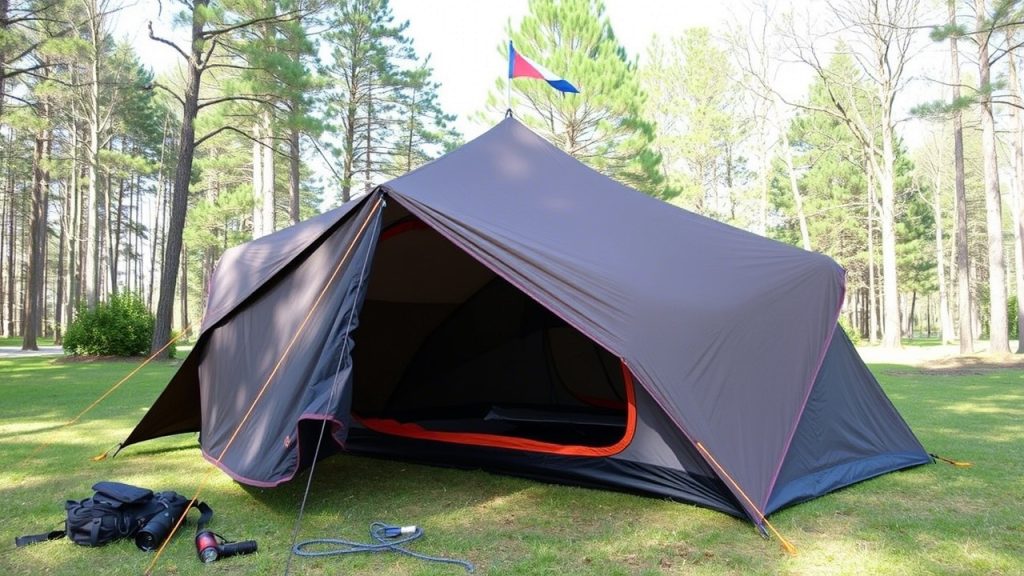
17. Compact Sleeping Pads for Floor Efficiency
Switch to compact sleeping pads, like the Therm-a-Rest NeoAir XLite, which pack small and fit tightly together to maximize floor space.
Why It Works: Slim pads leave room for gear or extra sleepers. The XLite is just 2.5 inches thick when inflated.
Pro Tip: Arrange pads in a staggered pattern to fit more in tight spaces.
18. Tent Cots for Elevated Sleeping
Tent cots, like the Kamp-Rite Oversize Tent Cot, combine a cot with a tent, elevating your sleeping area and freeing up ground space for storage.
Why It Works: The under-cot area stores backpacks or bins, and the oversize model fits one person with gear.
Pro Tip: Add a tarp below for a dry storage zone.

19. Screen Rooms for Extra Living Space
Screen rooms, like the Coleman Instant Screenhouse, attach to your tent or stand alone, providing a bug-free area for dining or relaxing.
Why It Works: They expand your living space without cluttering the sleeping area. The 10×10-foot model fits a picnic table.
Pro Tip: Add a tarp roof for rain protection.
20. Minimalist Packing to Free Up Space
Adopt a minimalist packing approach by bringing only essential gear. Use compression sacks for clothes and multi-use items like a spork to reduce bulk.
Why It Works: Less gear means more tent space for comfort. A 4-person tent feels roomier with just 2 people’s essentials.
Pro Tip: Create a packing checklist to avoid overpacking.
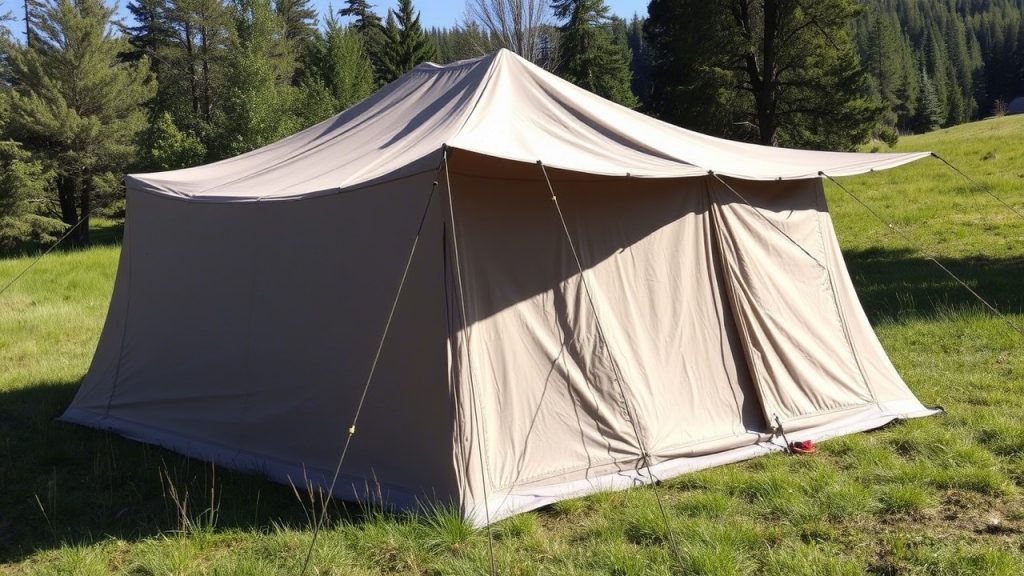
Tips for Maximizing Tent Space
To get the most out of these ideas, follow these practical tips:
- Choose the Right Tent Size: Pick a tent rated for one more person than your group (e.g., a 4-person tent for 3 people) to accommodate gear.
- Practice Setup: Familiarize yourself with your tent’s setup to optimize pole placement and maximize interior space.
- Use Lightweight Gear: Compact sleeping bags and stoves free up floor space.
- Store Outside When Possible: Keep non-essentials in vestibules or under tarps to preserve interior room.
- Stay Organized: Assign specific spots for gear to avoid clutter.
- Ventilate: Proper airflow prevents condensation, keeping the interior dry and usable.
- Clean Up: Shake out dirt and pack away gear daily to maintain a spacious feel.
Frequently Asked Questions
1. How do I choose a tent with enough space?
Select a tent with a larger capacity than your group size (e.g., a 4-person tent for 2-3 people). Look for high peak heights, vertical walls, and vestibules for extra storage.
2. What’s the difference between floor area and usable space?
Floor area is the total square footage, but usable space depends on wall angles and pole placement. Cabin-style tents with vertical walls offer more usable space than dome tents.
3. Are vestibules necessary for maximizing space?
Yes, vestibules keep gear outside the sleeping area, freeing up interior space. Look for tents with large or detachable vestibules for flexibility.
4. How can I make a small tent feel bigger?
Use gear lofts, pockets, and vertical storage to keep the floor clear. Light-colored tents and mesh walls create an airy feel.
5. Are multi-room tents worth it for families?
Multi-room tents are ideal for families, as they provide privacy and separate gear storage. Dividers create flexible layouts for sleeping and lounging.
6. Can I add space to an existing tent?
Yes, add vestibules, awnings, or screen rooms to expand storage or living areas. Universal gear lofts and organizers also increase interior space.
7. How do I prevent clutter in my tent?
Use collapsible bins, hanging organizers, and internal pockets. Pack minimally and store non-essentials outside in vestibules or dry bags.
8. Are rooftop tents a good option for space?
Rooftop tents save ground space and offer a spacious sleeping area, ideal for car campers. They’re less practical for backpackers due to vehicle requirements.
9. How do I maintain my tent’s space over time?
Clean and dry the tent after each trip to prevent mold or damage. Store it loosely to preserve fabric elasticity and ensure poles maintain their shape.
Conclusion
Maximizing space in your tent is about choosing the right design and using smart organization strategies. From cabin-style tents like the REI Co-op Kingdom 6 to innovative accessories like gear lofts and collapsible bins, these 20 ideas ensure you have room to sleep, store gear, and enjoy your adventure. Whether you’re backpacking with the MSR Hubba Hubba NX 2 or car camping with the Kodiak Canvas Flex-Bow 6, there’s a solution for every camper.
Pair these ideas with minimalist packing, proper ventilation, and a well-planned setup to create a spacious and comfortable campsite. Ready to hit the trail? Pick your favorite tent ideas, pack smart, and make your next adventure unforgettable!





